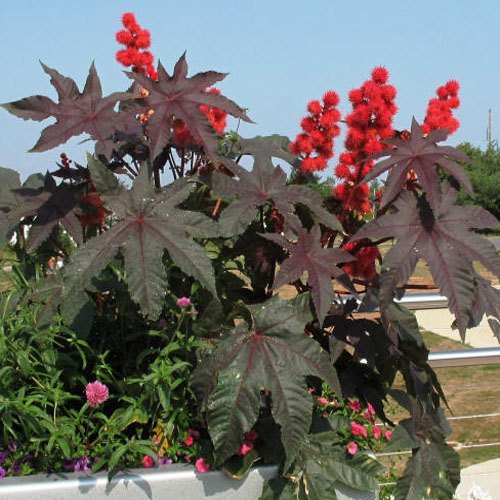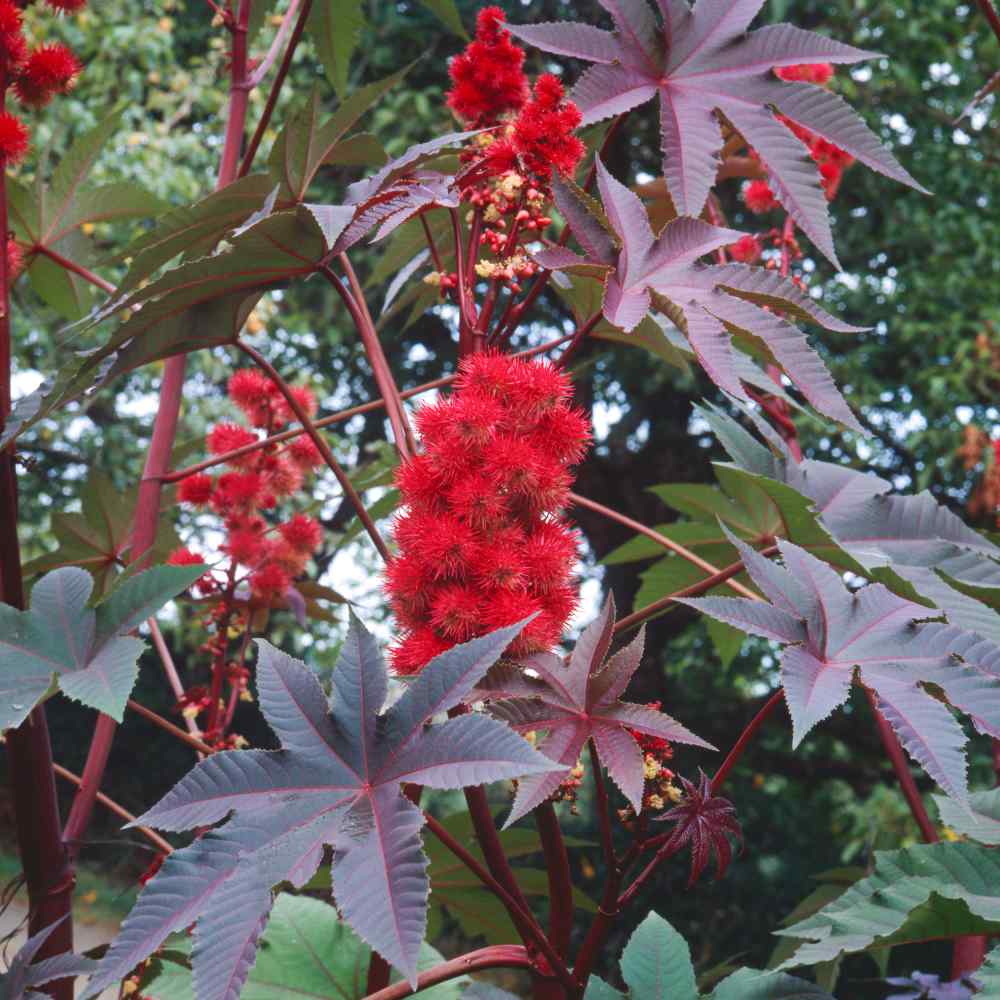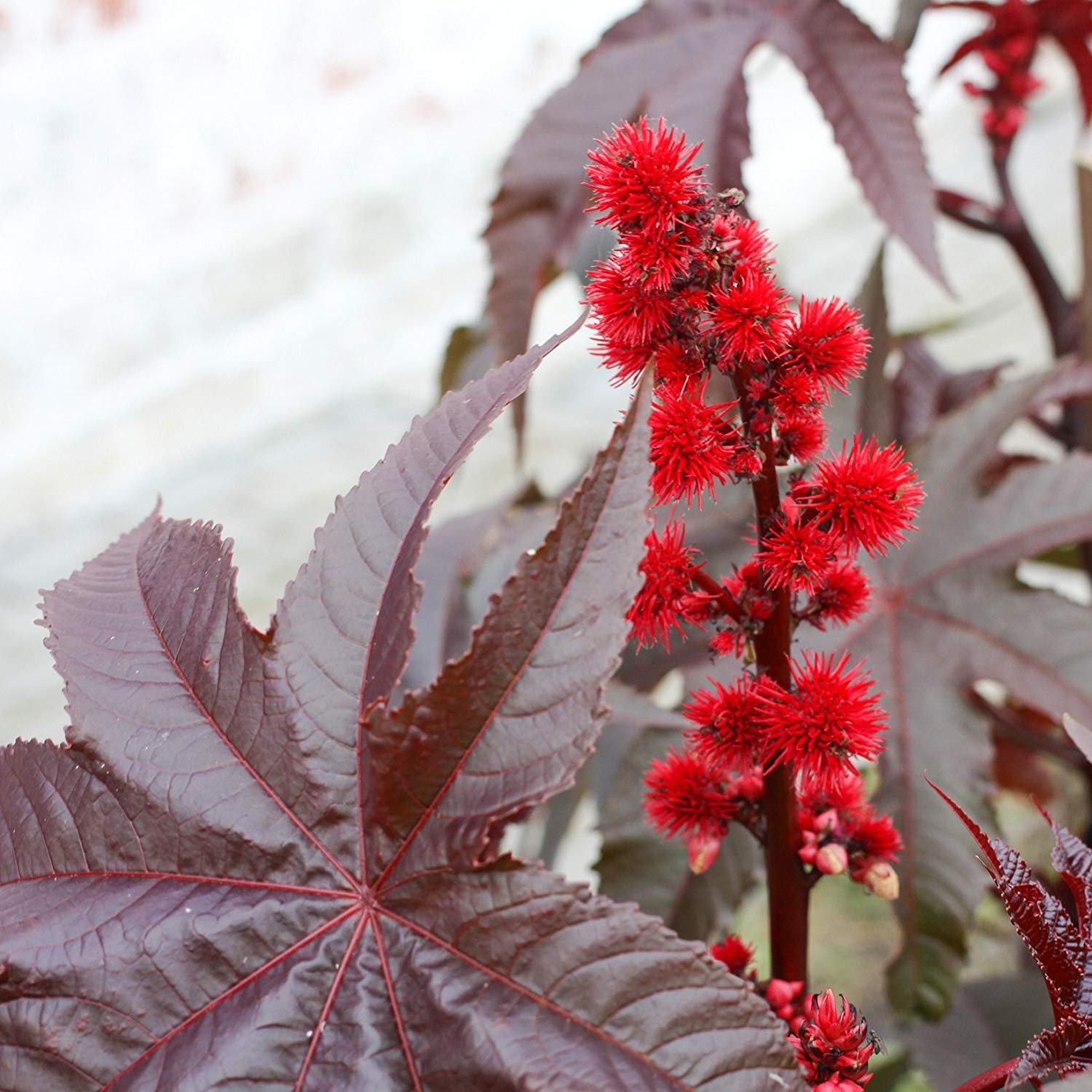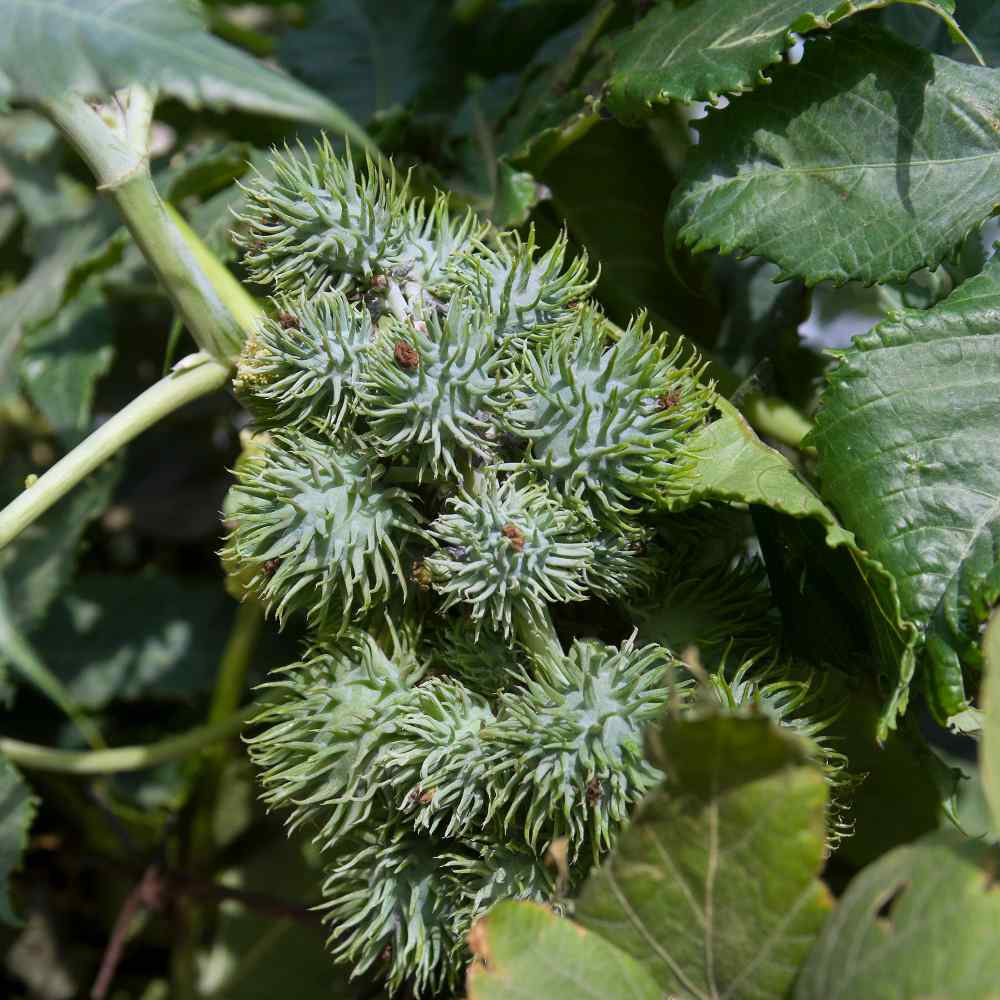
Castor Bean Planting and Care Guide
Quick Facts About Castor Bean
Castor Bean is an exotic shrub from Africa known for its large, star-shaped foliage, and vibrant, spiny seed pods. All parts of the plant are highly poisonous, and should NOT be consumed.
Planting Time
Castor Bean seeds can be sown outdoors in the late spring, or started indoors 6-8 weeks before the last expected frost.

Planting Location
Castor Bean grows best in areas of full sun in soil that is rich and drains well. This plant's large leaves can be damaged by wind, so growing in a sheltered location can be helpful.
How to Plant Castor Bean
- These seeds will better germinate if first scarified by nicking with a blade or sandpaper, followed by soaking in water overnight.
- If starting indoors, sow into small pots, but be prepared to transplant into larger pots before seedlings are ready to transfer outdoors.
- If sowing directly outdoors, prepare a seedbed by weeding and breaking up soil, then add organic compost for an enriched plot.
- Sow 1-2 seeds per plant at a depth of 1/2 to 1 inch deep.
- Keep soil around 70F degrees and maintain moisture. Under proper conditions, the seeds will germinate in 1-3 weeks.
- Before transplanting indoor seedlings into the garden, it's essential to "harden them off". This involves acclimating young plants to outdoor conditions by placing them in a sheltered outdoor area for about a week. Initially, shield them from strong winds and direct sunlight. If there's a risk of frost overnight, either cover the plants or bring them indoors, then return them outside in the morning. This hardening off method helps strengthen the plant's cell structure, minimizing transplant shock and sun damage.
- When transplanting outdoors, space Castor Bean plants 3-4 feet apart.

Care And Maintenance
- Keep weeds under control during the growing season. Weeds compete with plants for water, space and nutrients, so control them by either cultivating often or use a mulch to prevent their seeds from germinating.
- Mulches play a vital role in preserving soil moisture and ensuring consistent soil temperatures. When it comes to annuals, using organic mulch made from shredded leaves not only enhances the appearance of the bed but also enriches the soil as it decomposes over time. Remember to keep mulch away from the plant stems to avoid potential rot issues.
- Castor Bean prefers rich soil, and should be fertilized once per month with a general purpose fertilizer. Alternatively, apply a slow-release fertilizer at initial planting.
- Castor Bean benefits from regular waterings, but don't keep the soil soggy.
- Depending on the variety, Castor Bean can grow several feet within the growing season. Staking may be necessary to support growth. However, if growth if excessive, feel free to prune as needed.
- Castor Bean plants die as soon as frosts arrive, and they should be discarded at the end of the growing season.




































